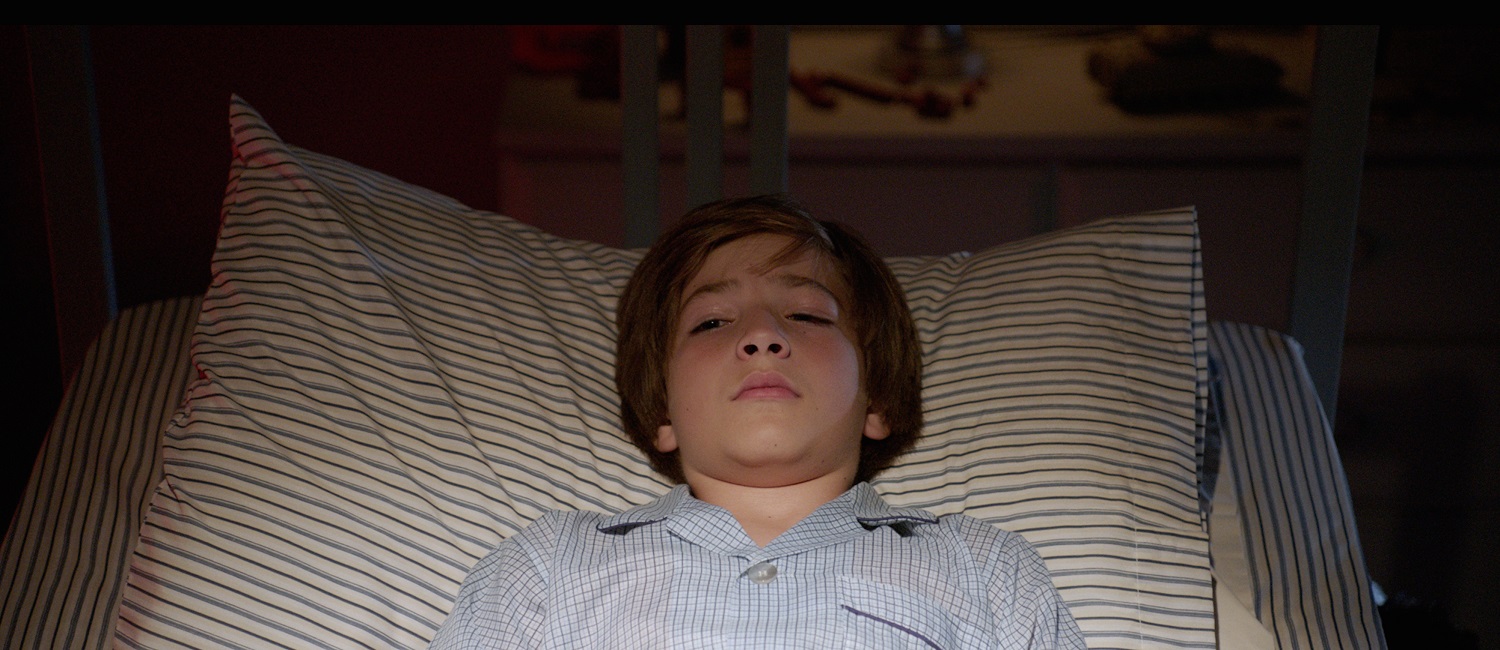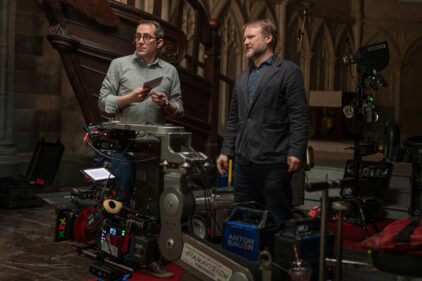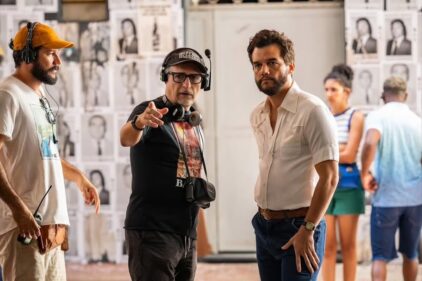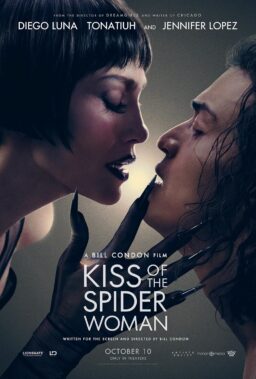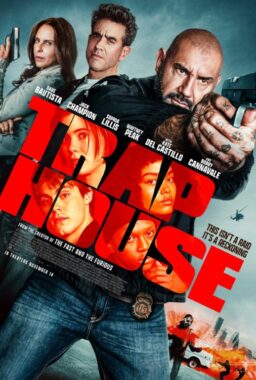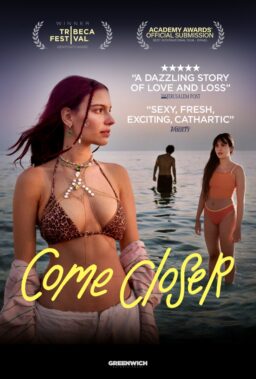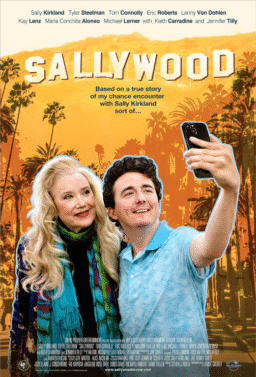Documentarian Rodney Ascher has created a distinct authorship by
collecting experiences of people interacting with the bizarre. In 2010, he
directed the short “The S from Hell,” which shared various memories
that people had about the oddly-disturbing Screen Gems logo that followed TV
shows like “The Partridge Family” or “The Flintstones.” His
feature documentary debut, 2012’s “Room 237,” earned cult status by
carving various rabbit holes of conspiracy theories about Stanley Kubrick’s
“The Shining,” in which off-screen voices vigorously interpret the most minute details
of the film to references of the Holocaust, or the moon landing, among many
others.
For his follow-up, Ascher points his camera to the real terror
of sleep paralysis, in which thousands become helpless to escape sinister
visions that appear during their slumber. It is a phenomenon that has
confounded cultures for centuries, and as this documentary notes, can be passed
along simply by talking about it. The horror-doc hybrid “The
Nightmare” shares the scarring experiences (and trends) of sleep
paralysis, while reimagining them with thrilling live-action presentations.
After premiering at the Sundance Film Festival and also SXSW, “The
Nightmare” is now set for a limited
theatrical release and VOD this Friday, June 5. Rodney Ascher talked to RogerEbert.com
about the making of his film, his own experience with sleep paralysis, whether
he reads criticism on his work, and more.
Aside from the eeriness of its subject matter, “The
Nightmare”has the unusual appeal
of being a feature length assembly of first-hand experiences that might be able
to really scare people.
It doesn’t
feel that unusual to me, I grew up watching “In Search Of … ”
[laughs]. The notion that these are real people and these are real stories,
that makes the horror more effective. And, horror is the language that people
are talking about with these experiences, that it’s as scary as a horror movie or like one. And then the reverse
is true. I thought that was very interesting. [It] brings to me all sorts of
questions. Where do these images from horror movies come from? Are they drawing
on common experience, and then affecting the next generation?

What significant experiences have you had with sleep paralysis,
or terrible nightmares in general?
I don’t
know that I’ve ever had too many
incredibly disturbing nightmares. I don’t
remember my dreams too often, though one in particular that will stick me with
me is a kid’s cartoon show, and I still remember the theme song. As far as
sleep paralysis goes, I have probably had it three or four times in my life,
and the first one is the one that stays with you. It is the reason that I made
this movie. It was the scariest thing that happened in my life. The sleep
paralysis was very much like how it we represent it in the movie. I had
roommates that I was trying to call out to, and make a sound. And one of those
shadowy ghost people, the very clear ones with the well-designed lines,
appeared in my room. It was eerie because I had a window that looked over the
woods, and at the time I had some really creepy, stark painting near the window
that was sort of backlit, and the shadow man kind of came from the side of
that. I thought it was moving over me in some type of judgment, and it was
years before I found out that it is the phenomenon that I now know as sleep
paralysis. I would have said at that time “supernatural visitations.”
When vetting your subjects, what’s the
limit to what you’d
accept in terms of believability in their stories?
Well, we stretched pretty far in that some of the stories aren’t about sleep paralysis,
but they are interesting sort of childhood experiences that seem to foreshadow
sleep paralysis. If that had only happened to one person, I might have felt
less sternly about keeping them in, but that three people had these experiences
was really interesting and really provocative to me. And if you’re talking about
verification, it was gut level – did this person seem genuine, tell this in
a compelling way?Some folks in the pre-interview process came off
as less persuasive, and I have no idea why that would be. I know I tell stories
sometimes and I don’t believe it myself. But there’s not much more to go on. If somebody tells a story, you look in
their eyes, you see if they are persuasive and emotional. And also beyond that,
there are a hundred of stories that we read and dozens of people that I Skyped
with. I was talking to people, and
my producers were, and we had researchers who were finding people. There
were some common tropes that we wanted to include, but there were also some
people who had really one-of-a-kind experiences, so there’s the middle ground of that classic experience. But we also
wanted the representations of some of the other dreams that were more unique or
original.
In terms of the artistic liberties within your recreations of
their dreams, what was most important to you?
There’s
certainly liberties there, though I kind of think that most of those will be
clear to the viewer. When you are doing a dramatic recreation in general, for
me it was important not to make it look like surveillance footage, and I can
imagine setting it up and trying to persuade the audience that we had a camera
that could record shadow people. But when doing a doc like this, my obligation
to the truth is being upfront to the artifice, and that goes to the way we shot
the reenactments. I wanted them to took good but I was perfectly comfortable
with that artificial, theatrical quality. I like that middle ground.

Like how “Room 237”didn’t
interview the people behind the making of “The
Shining,”you also don’t have any footage in
this film of scientific experts offering their two cents on sleep paralysis. What
were your thoughts in eschewing that particular angle?
There’s a
lot of ways that you can approach sleep paralysis as a topic. Science is one of
them, along with history, art, mythology, psychology. Or Freudian dream
analysis and the collective unconscious. At a certain point what I found most
compelling were first-person eyewitness accounts. I was more interested in
hearing their search for answers, and the way it might have changed their life.
Did you consult any experts off-camera about the subject?
I talked to a couple. There’s one that I talked to one the phone, and I read a half-dozen
books and as much research that I could understand. Though at a certain point,
neurology papers become something else. I have a BA in psychology that’s 20 years old, but I’m not an expert in brain
chemistry. I was interested to discover as much of it as I could. For books on
the subject, I would recommend Shelley Adler’s “Sleep Paralysis:
Night-mares, Nocebos, and the Mind-Body Connection.” And I was just
corresponding with Brian Sharpless, who has a new co-written book coming out:
“Sleep Paralysis: Historical, Psychological, and Medical
Perspectives” which looks really good and meaty. But even with those
books, [Shelley] is a clinical psychologist, more than half of her books are
about cultural and personal components of this stuff.
When initially putting this story together, did you pursue the
idea of trying to film your subjects experiencing sleep paralysis?
There were ideas that we talked about. Like setting up
surveillance, and using baby cameras, which turned out to be the most practical
notion, because they record for hours and hours and they’re cheap. But when people have sleep paralysis it’s
unpredictable. However, there is a quick shot [in “The
Nightmare”] of Chris in the midst of sleep paralysis that his girlfriend
shot for us because he was describing that fast, head-shaky, blurry thing that
I first saw in Aphex Twin videos, and also in ”Jacob’s Ladder.”[Chris] said that’s was
what it felt like for him when he was coming out of an experience. But also, a
lot of the folks that are in the movie are doing much better now.

A great deal of criticism was written about “Room
237”[including two pieces by
Jim Emerson for RogerEbert.com, here and
here.]
Did you read a lot of what was written about the film?
I read a lot of it. Clearly, both of these movies are the
product of a guy who reads a lot of comment threads [laughs]. So I was very
curious about what people thought of it. And in a way that one was a little
safer than that one. It’s the
notion of that people watch the same movie differently, it’s an inoculation against that negative criticism; the whole idea
is that some people hate this movie. But that’s just like the way they treated “The Shining”;
some people loved it, some people hated it. This one is a little more personal,
I’m in it more, and it’s a little more human
with actually seeing the faces of the people who appear in it. So I’ll probably be well-advised for this one [laughs].
What did you take away from the experience of working on “Room
237” that influenced what you wanted to do with “The
Nightmare”?
I wanted to create more images myself. I wanted to go into the
studio and shoot live-action myself and see if I could learn anything from what
I saw in “The Shining.” But this is a very low-budget movie that was
shot in about two weeks, it wasn’t as if we were able to emulate the shooting
schedule of “The Shining” [laughs]. But that was a challenge that I
wanted to do myself this go-around, as much as I love working with archival
footage.
How close, or appetizing, does a narrative feature project seem
to you?
I’m not sure what I’m doing next. The things
that I’m looking at, or trying
to develop, are docs, or are closer to a straightforward narrative. I don’t know if I’ve been doing this long
enough to have a pattern to the way that I work. But after “Room 237,” I
was poking at a few things before it became clear that “The
Nightmare” was what I would do. I’m
still poking. But then after I would have to trick somebody to pay for it
[laughs].
After sharing with viewers these first-hand accounts of sleep
paralysis, “The Nightmare”also notes that people have experienced it after simply hearing
about it. So far, has anyone expressed this happening possibly because of your
film?
Well, one guy said that he got it after watching the trailer.
Like a “Halloween III” effect [laughs].

